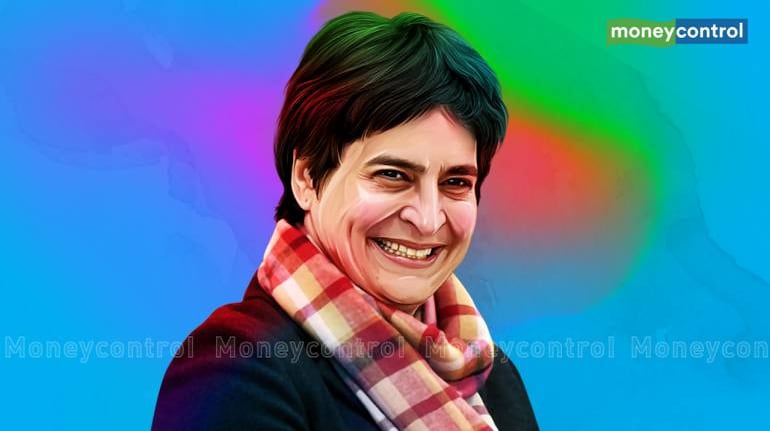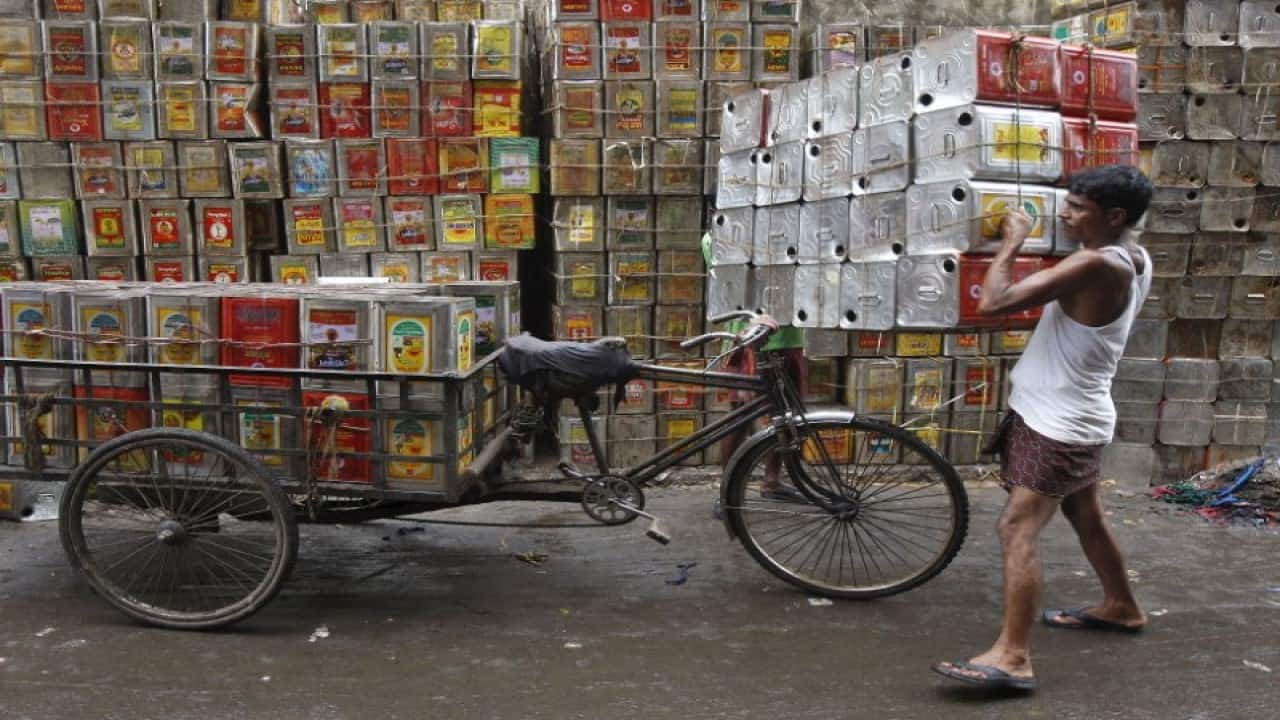Congress general secretary Priyanka Gandhi Vadra on October 19 announced that 40 percent of candidates the party will field in the upcoming state election would be women.
The announcement is clearly intended to woo women voters in a state where the grand old party has a weak organisation on the ground and has failed to make a mark in the last three decades.
READ: UP Assembly elections | Congress to release first list of candidates soon
Vadra said the move is aimed at improving women representation in state politics. But will it have an impact?
“If not this election, maybe the women would win the next election. We are ready to help them. I invite women to come forward and be part of this revolution,” Vadra told the media in Lucknow in response to a question about where to get winnable candidates.
A Congress campaign poster with the tagline “Ladki hoon, lad sakti hoon” (I am a girl, I can fight) was released after the announcement.
Mobilising women voters of Uttar Pradesh
Of the 14.4 crore eligible voters in Uttar Pradesh, 6.6 crore are women. Vadra’s announcement would mean that out of the 403 assembly seats going to polls early next year, the Congress will give about 160 tickets to women candidates if it goes to the polls alone.
Also, read: In-Depth: Political climate heats up in Uttar Pradesh as clock ticks on 2022 Assembly polls
For quite some time now, the growing political mobilisation of women has been reflected in turnout figures even if it has had very little influence on skewed political representation. In Uttar Pradesh, where women constitute nearly 46 percent of voters, the representation of women in the state legislature has improved from over 2 per cent in the 1990s to about 11 per cent in 2017.
In the state where politics is by and large dictated by caste dynamics, women have, in the recent past, emerged as a significant voter bloc. In 2017, for instance, when the Bharatiya Janata Party (BJP) stormed to power, while 59.5 percent of men voters exercised their franchise, 63.25 percent of eligible women cast their vote.
Also, read: Priyanka Gandhi has so far proved to be a catastrophe for Congress
Eleven (10 percent) out of 114 Congress candidates were women in 2017. The BJP had given tickets to 43 women in its list of 384 candidates while the Samajwadi Party (SP) had given tickets to 33 women, and the Bahujan Samaj Party (BSP) 19.
‘Pure drama’
Rival parties have criticised the Congress announcement. BSP chief Mayawati termed it a “pure election drama”, asking why the party did not enact the proposed law reserving 33 percent of all parliamentary and assembly seats for women when it held the reins at the Centre.
“When it is in power and going through good days, the Congress does not remember Dalits, backwards and women. But now when they are going through a low period which refuses to go away, they have remembered women in Uttar Pradesh like they did Dalits in Punjab,” the former Uttar Pradesh chief minister said.
The Congress’ decision comes close on the heels of an impressive performance by women candidates in the recent UP panchayat polls, where about 53.7 per cent of successful candidates were women. Of the 75 district panchayat presidents’ posts, 42 are occupied by women against their share of 24 posts as per the one-third reservation norm for women, while men hold only 33 seats.
Countering the BJP
The move is seen as a counter to the BJP’s efforts to woo women voters. The BJP has been citing the Ujjwala cooking gas cylinder scheme, toilet construction, rural housing and the triple talaq law to highlight the Narendra Modi government’s women-centric schemes.
Also, read: Assembly Elections 2022: Top BJP leaders discuss poll strategy for Uttar Pradesh
On August 10, Modi launched the Ujjwala scheme 2.0, handing over free LPG cylinder connections to beneficiaries from Mahoba district of the Bundelkhand region in Uttar Pradesh.
“Our daughters will be able to come out of the house and kitchen and contribute extensively in nation-building only when the problems related to home and kitchen are solved first. Therefore, in the last six to seven years, every such solution has been worked on a mission mode,” the prime minister said at the event.
Also, read: Women got unprecedented benefits by free LPG connections : PM Narendra Modi at the virtual launch of Ujjwala 2.0
Vadra, perhaps wary of the impact of the scheme, took a dig at the PM at her press conference on October 19. “Parties think they can appease women by giving an LPG cylinder or Rs 2,000. But the struggle of a woman is long-drawn and much deeper,” she said.
The Congress seems confident Vadra has resonance among the people, especially after her interactions in the wake of the Hathras sexual assault case and her proactive approach following the Lakhimpur Kheri violence. On October 17, Congress leader PL Punia said that Priyanka Gandhi Vadra would be the party’s face in the election campaign for the UP assembly polls.
Many in the Congress party termed the announcement a "game changer" that would set the momentum for the grand old party in Uttar Pradesh.
But not everyone agrees. “The question is how much of the women votes will the allocation of 40 per cent seats bring to the Congress party. Say, for instance, if the average vote share of Congress is going to be 10 per cent, the male-female vote difference is going to be 1-2 per cent,” Rahul Verma, fellow at Centre for Policy Research, told MoneyControl.
So in that sense, said Verma, only women vote cannot catapult the Congress to a strong position in UP. "Thus, the party needs to do more," he said.
Also, read: Uttar Pradesh Election, 2022: From Modi to Owaisi, 8 key faces in the contest
The BJP won 312 seats in the 2017 polls. The Congress, which fought the election in alliance with the SP, managed to win just seven of the 114 contested seats with a vote share of 6.25 percent.
The Congress party, experts said, has the challenging task of increasing its present vote share to at least 33 percent to challenge the BJP in UP.
“For last two-three months, I think Priyanka Gandhi has been making right noises in UP. This is certainly going to create a positive impact but I do not know what the quantum of that impact is going to be,” Verma said.
Similar experiments
Many political parties have in the past tried to woo women voters with similar experiments, successfully so in some cases.
In the 2019 general election, for example, West Bengal chief minister Mamata Banerjee's Trinamool Congress gave 40 percent of its tickets to women. The party fielded 17 women candidates out of the 42 Lok Sabha seats in the state, nine of whom won. Similarly, Odisha chief minister Naveen Patnaik’s Biju Janata Dal (BJD) gave tickets to seven (33 per cent) women out of the 21 Lok Sabha seats in Odisha. Five women got elected.
But, Uttar Pradesh for the Congress is a different ball game, experts said.
“Mostly we see, women get tickets from seats which are hard to win. We need to see whether what Priyanka Gandhi is starting in UP is being replicated in states or seats where the Congress is strong,” Verma said.
On October 20, the Trinamool Congress accused the Congress of
trying to emulate it while hoping that this is genuine and not just tokenism.
In the case of the Trinamool and BJD, both were in power in their respective states ahead of the polls, and unveiled a raft of welfare schemes popular with women. That is not the case with the Congress in Uttar Pradesh.
For a party that once dominated the state and is now in the wilderness, the Congress’ announcement would appear to be a shot in the dark as the
political climate heats up.


































